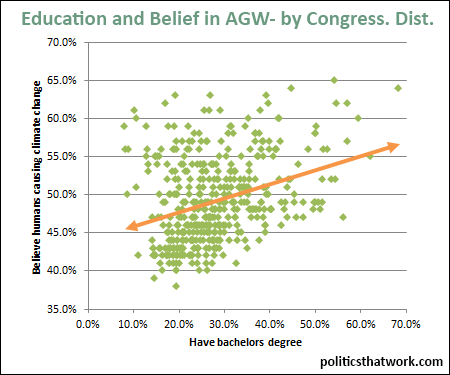
Description: This graph shows the correlation between the level of acceptance of the scientific consensus that human activity is the primary cause of recent climate change and the percentage of the population that has attained a bachelor's degree or higher. Each dot represents a federal congressional district and the orange trend line indicates the average variation in acceptance of AGW as the level of education rises.
Sources: Census Yale
Data: Excel
Last updated: November 19, 2015





